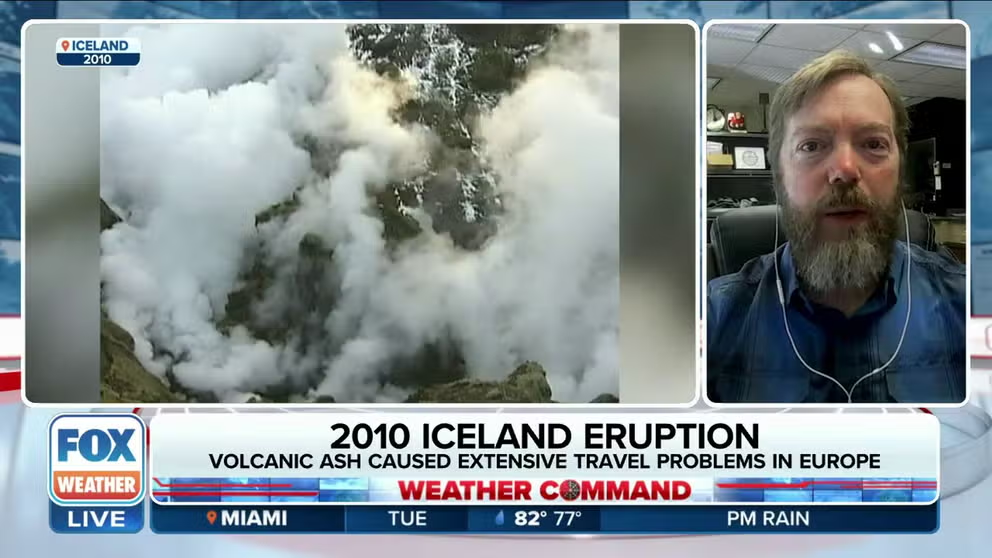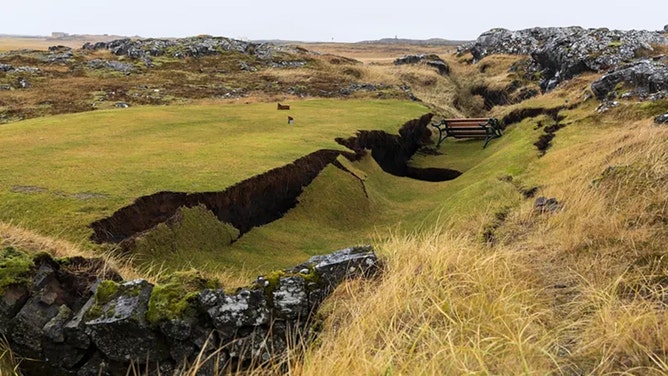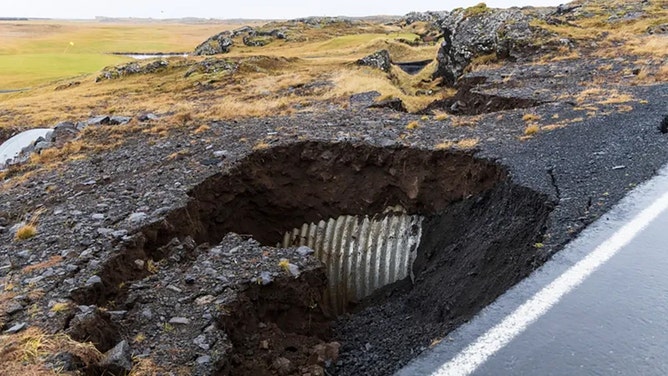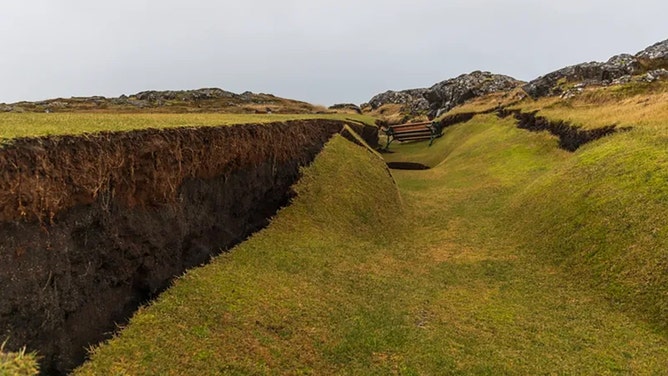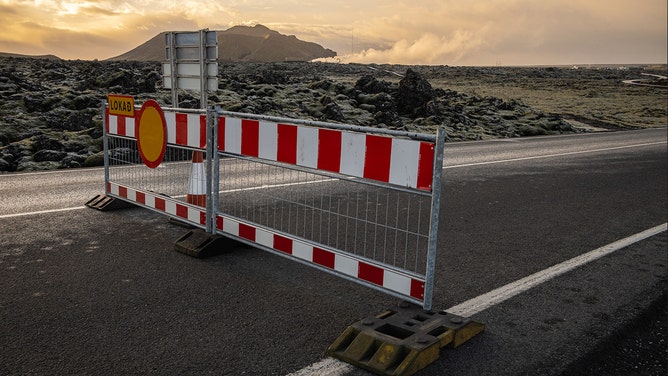An explosive Iceland volcanic eruption could have wreaked havoc on international air travel
Besides the potentially devastating impacts to the town of Grindvalk and the surrounding area from a potential eruption, any large ash plume could wreak havoc on international air travel.
Geologist: Iceland volcano eruption shouldn't be explosive if it does erupt
Benjamin Andrews, director of the Global Volcanism Program, explains how scientists continue to monitor the volcano in Iceland for signs of eruption. If the volcano blows, Andrews said scientists don't really what damages residents can expect Grindavík.
Update as of 7:00 p.m. ET: New data from the Iceland Meteorological Agency Monday evening has indicated that an explosive eruption is now unlikely after initial fears that it was within the realm of possibility. This would lead to minimal impacts on international flights but would not minimize the potentially significant impacts on the town of Gradavik and the surrounding areas.
--
As volcanic and seismic activity continues to rattle southwestern Iceland with thousands of small earthquakes, scientists remain on alert, still declaring that there is a "significant likelihood" of volcanic eruption in the coming days.
Besides the potentially devastating impacts to the town of Grindavík and the surrounding area from a potential eruption, any large ash plume could wreak havoc on international air travel.
"When we start to have eruptions on Iceland, there is an impact for the U.S. and Europe because of the pathways the planes take to get from the U.S. over to Europe fly right over Iceland," says FOX Weather Meteorologist Britta Merwin. "They’re hunting that jet stream — there’s a weather connection for this."
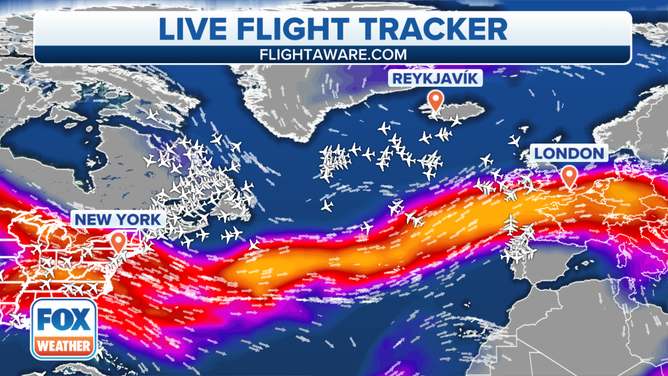
Current air traffic map with highlighted jet stream as of Monday morning Nov. 13, 2023.
(FOX Weather)
But an explosive eruption would send volcanic ash, smoke, and magma into the atmosphere, leading to impacts of flights that cross the Atlantic, says FOX Weather Senior Meteorologist Jordan Overton.
"Current forecast models indicate the ash plume would gradually overspread the ocean in the coming days, should an eruption occur over the next day or two," Overton said.
Volcanic ash major hazard for air traffic
If an explosive eruption occurred and generated a large ash cloud, one scenario would have ash blown west toward Greenland, then veering back to the north then east toward Northern Europe, according to the FOX Forecast Center.
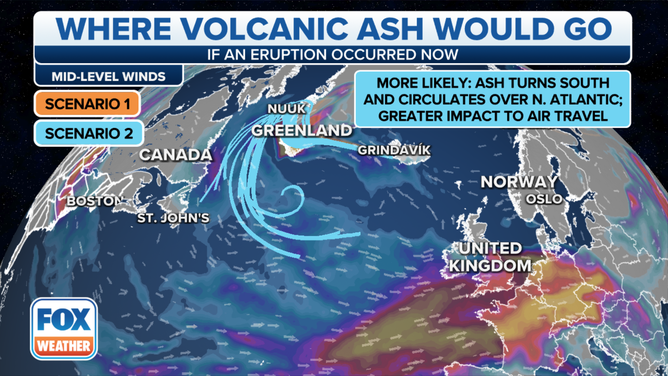
(FOX Weather)
But a more likely scenario would push ash west then south over the North Atlantic where it could have a greater impact on international air travel.
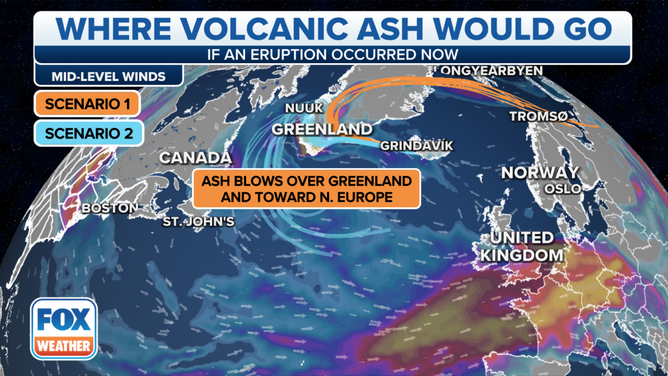
(FOX Weather)
Volcanic ash is a major hazard for aircraft, according to the National Weather Service.
"Aircraft encounters with ash clouds can diminish visibility, damage flight control systems, and cause jet engines to fail," the NWS says. "Air traffic controllers and pilots must be quickly notified of volcanic eruptions to avoid volcanic ash clouds."
WHAT ARE THE 4 CLASSIC TYPES OF VOLCANOES?
Overton says the only precedent we have in recent history is in 2010 when the Icelandic volcano Eyjafjallajökull erupted.
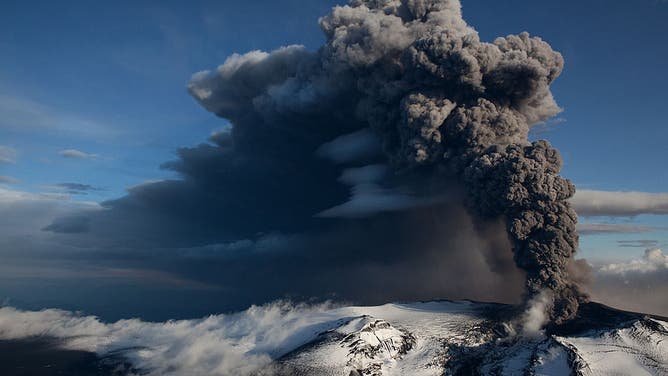
FILE - REYKJAVIK, ICELAND - MAY 15, 2010: Ash plume from Iceland's Eyjafjallajokull crater during it's eruption, spewing tephra and ashes that drift toward continental Europe on May 15, 2010 near Reykjavik, Iceland. On this day the ash cloud rose to an average of 6 km (20,000 ft) peaking at 8 km (26,000 ft) said Icelandic Meteorological Office and Institute of Earth Sciences, University of Iceland. (Photo by Etienne De Malglaive/Getty Images)
(Etienne De Malglaive / Getty Images)
"That ensuing ash cloud shut down air travel all over Europe, and at the time was one of the largest air traffic shutdowns we've seen," Overton said.
Over 300 airports across two dozen European countries were closed for a week in mid-April, resulting in over 100,000 canceled flights affecting 7 million passengers, according to the USGS.
"It's important to note that the exact magnitude of any impacts is still unknown, as that will depend on the exact extent of the ash cloud, should it occur," Overton said.
